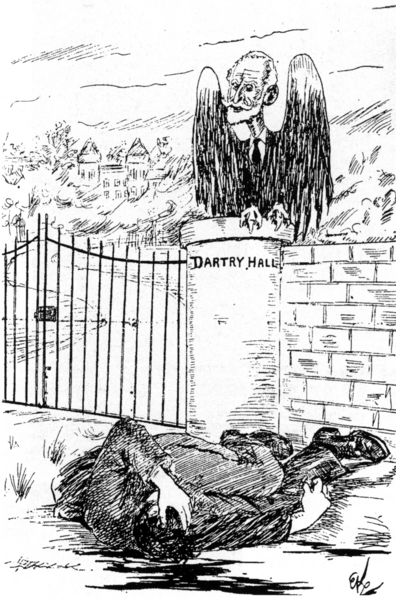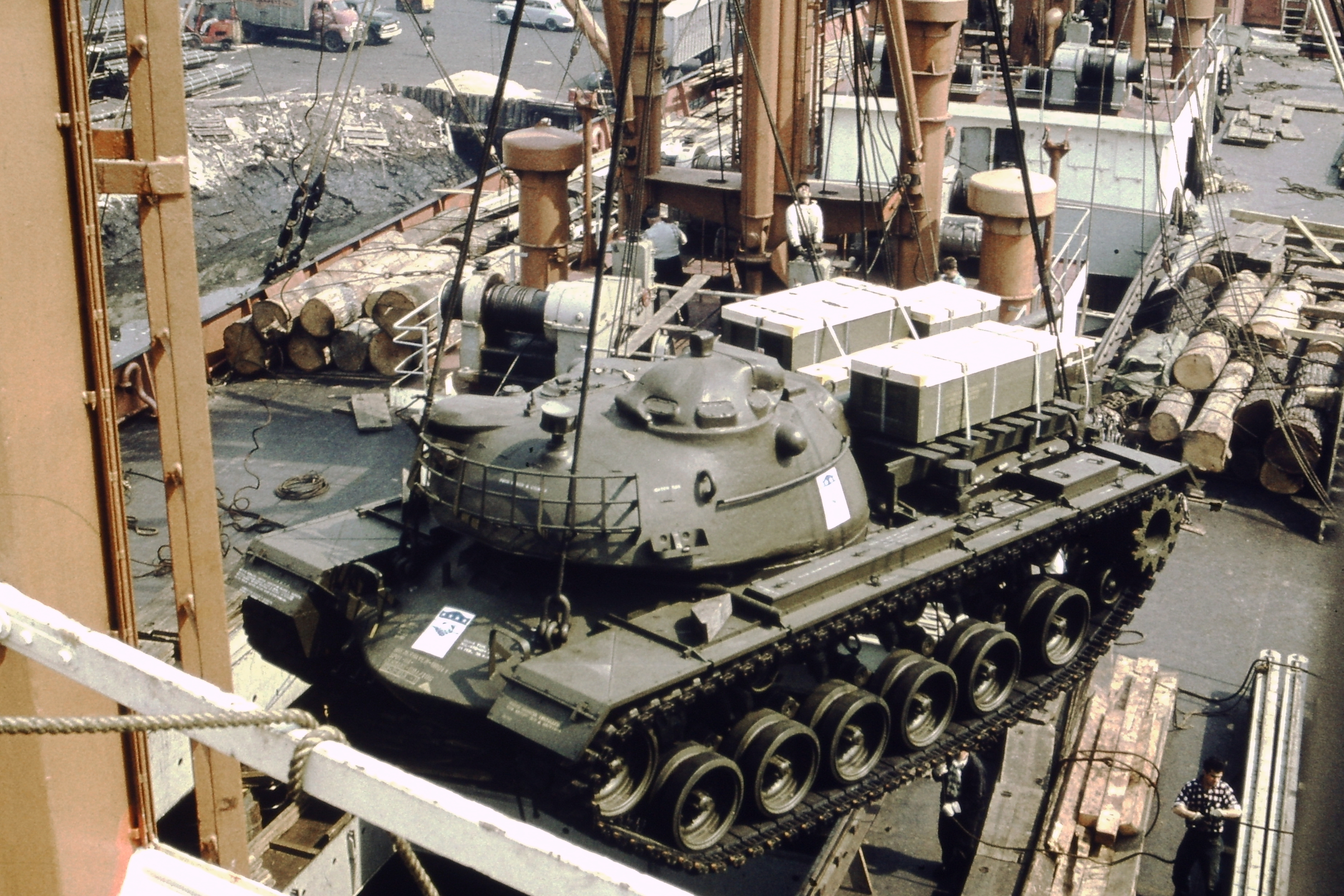|
Dublin Lockout Of 1913
The Dublin lock-out was a major industrial dispute between approximately 20,000 workers and 300 employers that took place in Ireland's capital and largest city, Dublin. The dispute, lasting from 26 August 1913 to 18 January 1914, is often viewed as the most severe and significant industrial dispute in Irish history. Central to the dispute was the workers' right to unionise. Background Poverty and housing Many of Dublin's workers lived in terrible conditions in tenements. For example, over 830 people lived in just 15 houses in Henrietta Street's Georgian tenements. At 10 Henrietta Street, the Irish Sisters of Charity ran a laundry that was inhabited by more than 50 single women. An estimated four million pledges were taken in pawnbrokers every year. The infant mortality rate among the poor was 142 per 1,000 births, extraordinarily high for a European city. The situation was made considerably worse by the high rate of disease in the slums, which was worsened by the lack o ... [...More Info...] [...Related Items...] OR: [Wikipedia] [Google] [Baidu] |
Irish History
The first evidence of human presence in Ireland dates to around 33,000 years ago, with further findings dating the presence of homo sapiens to around 10,500 to 7,000 BC. The receding of the ice after the Younger Dryas cold phase of the Quaternary around 9700 BC, heralds the beginning of Prehistoric Ireland, which includes the archaeological periods known as the Mesolithic, the Neolithic from about 4000 BC and the Copper Age beginning around 2500 BC with the arrival of the Beaker Culture. The Irish Bronze Age proper begins around 2000 BC and ends with the arrival of the Iron Age of the Celtic Hallstatt culture, beginning about 600 BC. The subsequent La Tène culture brought new styles and practices by 300 BC. Greek and Roman writers give some information about Ireland during the Classical period (see "protohistoric" period), by which time the island may be termed "Gaelic Ireland". By the late 4th century AD Christianity had begun to gradually subsume or replace the earlier Celti ... [...More Info...] [...Related Items...] OR: [Wikipedia] [Google] [Baidu] |
Liverpool
Liverpool is a city and metropolitan borough in Merseyside, England. With a population of in 2019, it is the 10th largest English district by population and its metropolitan area is the fifth largest in the United Kingdom, with a population of 2.24 million. On the eastern side of the Mersey Estuary, Liverpool historically lay within the ancient hundred of West Derby in the county of Lancashire. It became a borough in 1207, a city in 1880, and a county borough independent of the newly-created Lancashire County Council in 1889. Its growth as a major port was paralleled by the expansion of the city throughout the Industrial Revolution. Along with general cargo, freight, and raw materials such as coal and cotton, merchants were involved in the slave trade. In the 19th century, Liverpool was a major port of departure for English and Irish emigrants to North America. It was also home to both the Cunard and White Star Lines, and was the port of registry of the ocean li ... [...More Info...] [...Related Items...] OR: [Wikipedia] [Google] [Baidu] |
Stevedore
A stevedore (), also called a longshoreman, a docker or a dockworker, is a waterfront manual laborer who is involved in loading and unloading ships, trucks, trains or airplanes. After the shipping container revolution of the 1960s, the number of dockworkers required declined by over 90%. Etymology The word ''stevedore'' originated in Portugal or Spain, and entered the English language through its use by sailors. It started as a phonetic spelling of ''estivador'' (Portuguese) or ''estibador'' (Spanish), meaning ''a man who loads ships and stows cargo'', which was the original meaning of ''stevedore'' (though there is a secondary meaning of "a man who stuffs" in Spanish); compare Latin ''stīpāre'' meaning ''to stuff'', as in ''to fill with stuffing''. In Ancient and modern Greek, the verb στοιβάζω (stevazo) means pile up. In the United Kingdom, people who load and unload ships are usually called ''dockers''; in Australia, they are called ''dockers'' or ''wharfies''; and ... [...More Info...] [...Related Items...] OR: [Wikipedia] [Google] [Baidu] |
John Lumsden
Sir John Lumsden KBE (14 November 1869 – 3 September 1944) was an Irish physician. He was famous for his role as Chief Medical Officer of Guinness Brewery, during which time he founded both St James's Gate F.C. and the St John Ambulance Brigade of Ireland. During the Easter Rising of 1916, he was noted for treating anyone who was wounded, regardless of which side they fought for. Early years Sir John Lumsden was born in Drogheda, County Louth, Ireland, the son of John Lumsden, a bank manager, and Florence Isabella Groom Lumsden (née McKean). The father had come from Scotland via India to work in a bank in Armagh and later moved to Dublin in 1867 to work for the Provincial Bank.Sport supplement; Golfing Log By Dermot Gilleece, the Irish Times, 7 December 1996 Lumsden's father was a keen golfer and Lumsden worked with his father and his brother in setting up a rough and ready golf course in 1885 west of the Phoenix Cricket Club, thus establishing Ireland's second oldest golf ... [...More Info...] [...Related Items...] OR: [Wikipedia] [Google] [Baidu] |
Scotland
Scotland (, ) is a country that is part of the United Kingdom. Covering the northern third of the island of Great Britain, mainland Scotland has a border with England to the southeast and is otherwise surrounded by the Atlantic Ocean to the north and west, the North Sea to the northeast and east, and the Irish Sea to the south. It also contains more than 790 islands, principally in the archipelagos of the Hebrides and the Northern Isles. Most of the population, including the capital Edinburgh, is concentrated in the Central Belt—the plain between the Scottish Highlands and the Southern Uplands—in the Scottish Lowlands. Scotland is divided into 32 administrative subdivisions or local authorities, known as council areas. Glasgow City is the largest council area in terms of population, with Highland being the largest in terms of area. Limited self-governing power, covering matters such as education, social services and roads and transportation, is devolved from the Scott ... [...More Info...] [...Related Items...] OR: [Wikipedia] [Google] [Baidu] |
England
England is a country that is part of the United Kingdom. It shares land borders with Wales to its west and Scotland to its north. The Irish Sea lies northwest and the Celtic Sea to the southwest. It is separated from continental Europe by the North Sea to the east and the English Channel to the south. The country covers five-eighths of the island of Great Britain, which lies in the North Atlantic, and includes over 100 smaller islands, such as the Isles of Scilly and the Isle of Wight. The area now called England was first inhabited by modern humans during the Upper Paleolithic period, but takes its name from the Angles, a Germanic tribe deriving its name from the Anglia peninsula, who settled during the 5th and 6th centuries. England became a unified state in the 10th century and has had a significant cultural and legal impact on the wider world since the Age of Discovery, which began during the 15th century. The English language, the Anglican Church, and Engli ... [...More Info...] [...Related Items...] OR: [Wikipedia] [Google] [Baidu] |
Tuberculosis
Tuberculosis (TB) is an infectious disease usually caused by '' Mycobacterium tuberculosis'' (MTB) bacteria. Tuberculosis generally affects the lungs, but it can also affect other parts of the body. Most infections show no symptoms, in which case it is known as latent tuberculosis. Around 10% of latent infections progress to active disease which, if left untreated, kill about half of those affected. Typical symptoms of active TB are chronic cough with blood-containing mucus, fever, night sweats, and weight loss. It was historically referred to as consumption due to the weight loss associated with the disease. Infection of other organs can cause a wide range of symptoms. Tuberculosis is spread from one person to the next through the air when people who have active TB in their lungs cough, spit, speak, or sneeze. People with Latent TB do not spread the disease. Active infection occurs more often in people with HIV/AIDS and in those who smoke. Diagnosis of active TB is ... [...More Info...] [...Related Items...] OR: [Wikipedia] [Google] [Baidu] |
Infant Mortality Rate
Infant mortality is the death of young children under the age of 1. This death toll is measured by the infant mortality rate (IMR), which is the probability of deaths of children under one year of age per 1000 live births. The under-five mortality rate, which is also referred to as the ''child mortality rate'', is also an important statistic, considering the infant mortality rate focuses only on children under one year of age. In 2013, the leading cause of infant mortality in the United States was birth defects. Other leading causes of infant mortality include birth asphyxia, pneumonia, congenital malformations, term birth complications such as abnormal presentation of the fetus umbilical cord prolapse, or prolonged labor, neonatal infection, diarrhea, malaria, measles, and malnutrition. One of the most common preventable causes of infant mortality is smoking during pregnancy. Lack of prenatal care, alcohol consumption during pregnancy, and drug use also cause complications w ... [...More Info...] [...Related Items...] OR: [Wikipedia] [Google] [Baidu] |
National Archives Of Ireland
The National Archives of Ireland ( ga, Cartlann Náisiúnta na hÉireann) is the official repository for the state records of Ireland. Established by the National Archives Act 1986, taking over the functions of the State Paper Office (founded 1702) and the Public Record Office of Ireland (founded 1867). In 1991, the National Archives moved to its current premises in Bishop Street, Dublin. The Archives stand on the site of the Jacob's Factory, one of the garrisons held by rebels during the 1916 Easter Rising. The National Archives of Ireland cites their mission statement as, "Securing the preservation of records relating to Ireland which warrant preservation as archives and ensure that appropriate arrangements are made for public access to archives." They hold records relating to all of Ireland, including documents that refer to the Republic of Ireland and Northern Ireland; although Northern Ireland does have their own archives which is titled the Public Record Office of Northern ... [...More Info...] [...Related Items...] OR: [Wikipedia] [Google] [Baidu] |
Religious Sisters Of Charity
The Religious Sisters of Charity or Irish Sisters of Charity is a Roman Catholic religious institute founded by Mary Aikenhead in Ireland on 15 January 1815. Its motto is ('The love Christ urges us on'; ). The institute has its headquarters in Dublin. The congregation is governed by a congregational leader, assisted by a group of sisters known as the general leadership team or the general council. In England and Scotland, it operates as a registered charity. The Religious Sisters of Charity of Australia is constituted as a distinct Congregation. History The religious institute was founded by Mary Frances Aikenhead (1787–1858) who opened its first convent in Dublin in 1815. In 1834 St. Vincent's Hospital in Dublin was set up by Mary Aikenhead. In 1838 five sisters arrived in Australia — the first religious women to set foot on Australian soil — and later opened a convent in Parramatta. Since 1842 the Australian congregation has operated independently. The sisters arrived i ... [...More Info...] [...Related Items...] OR: [Wikipedia] [Google] [Baidu] |







